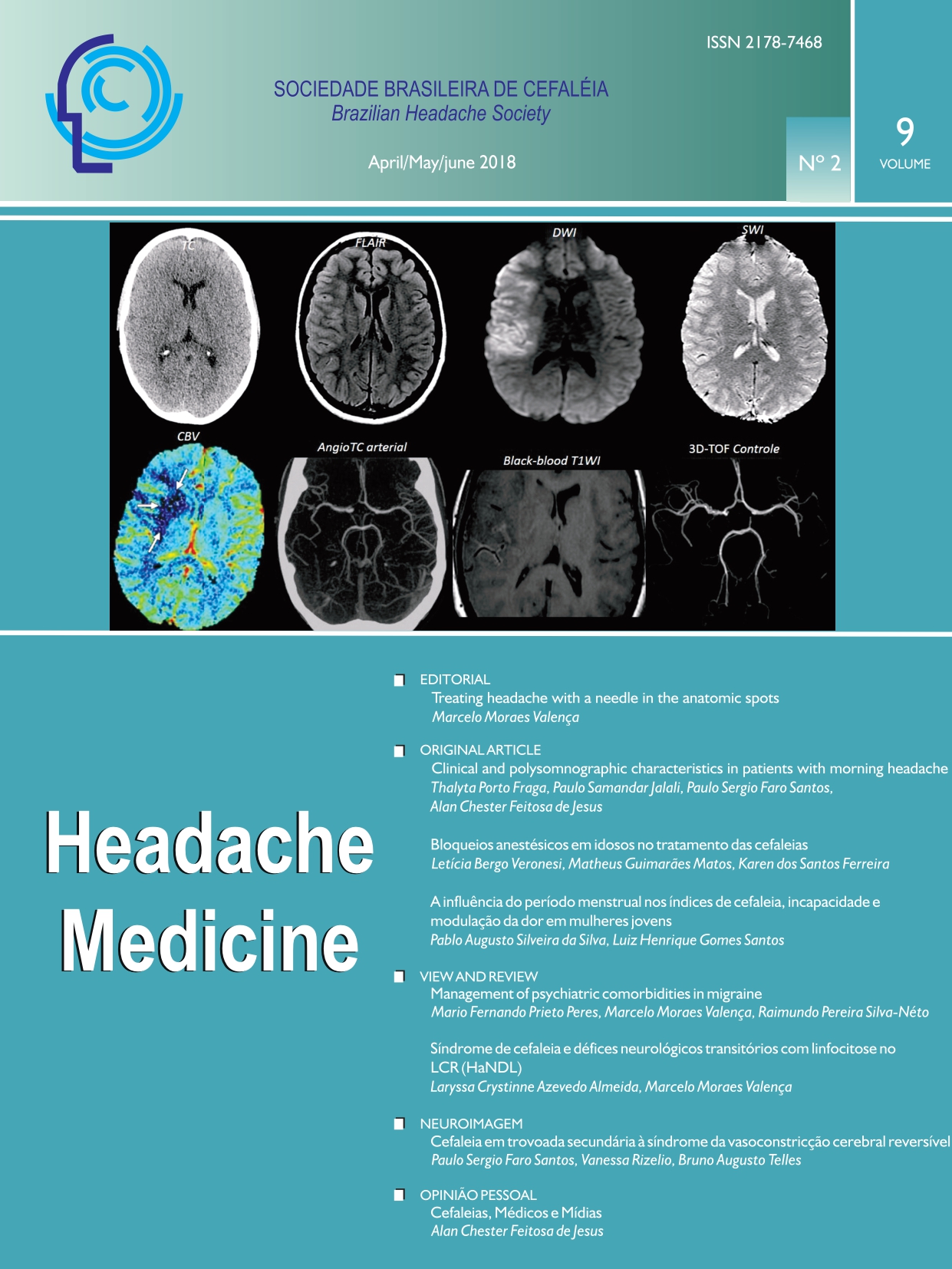Anesthetic blocks in the elderly in the treatment of headache
Views: 447DOI:
https://doi.org/10.48208/HeadacheMed.2018.11Keywords:
Headache, Anesthetic block, ElderlyAbstract
Introduction: Headache in elderly patients is a frequent complaint, with atypical clinical features in this group. In addition, treatment options are limited, considering the presence of other comorbidities and daily medications in use. The possibility of anesthetic blocks would be an interesting option for this group of patients. Objectives: This study aimed to describe and analyze, in a single center, elderly patients who were treated with anesthetic blocks for headache. The main types of headache, indications of peripheral blocks, blocked points and, adverse effects response to treatment were also assessed. Methods: The study was conducted from the review of medical records in a Neurological Clinic. Patients with headache diagnosis, with 50 years old and older, who received anesthetic blocks were included. Diagnosis of headache, characteristics, intensity and frequency, associated comorbidities, instituted treatments, including anesthetic blocks and botulinum toxin application, as well as therapeutic response and presence of adverse effects were described. Results: Medical records from 2013 to 2017 were reviewed (n= 4,106). Of these, 785 patients were treated for chronic pain with anesthetic blocks and 82 patients were elderly with headache, treated with anesthetic blocks. The mean age of the patients was 57.7 years (SD 7.89) and 65 (79.3%) were women. The main diagnosis of headache was migraine (41, 50%), cervicogenic headache (33, 40.2%), temporomandibular dysfunction (11, 13.4%), trigeminal-autonomic headache (4, 4.8%) and tension-type headache (2, 2.4%). The frequency of pain was 24.3 days/month (SD 9.2) and mean pain intensity was 9.3 (0-10). The abusive use of analgesic medications was described in 17 (20.7%) patients. The main anesthetic blocks were major and minor occipital nerves (62, 75.6%) and muscular trigger points (19, 23.2%). Botulinum toxin application was performed in 6 patients (7.3%). The average number of blocks was 2.74 (SD 2.38) per patient. There was a total improvement of the symptoms in 52 (63.4%) and partial improvement in 22 (26.83%). The mean frequency of pain after treatment was 4.3 days/month (SD 6.09). There were no adverse events related to the procedures. Conclusion: The use of anesthetic blocks in the elderly in the treatment of headache was considered safe and effective as a therapeutic option.
Downloads
Published
How to Cite
Issue
Section
License
Copyright (c) 2018 Headache Medicine

This work is licensed under a Creative Commons Attribution 4.0 International License.












